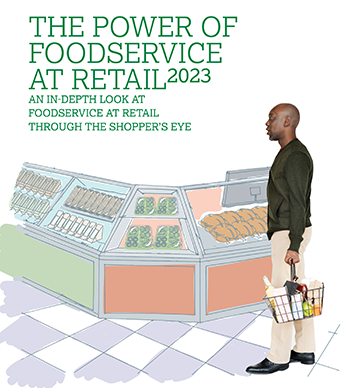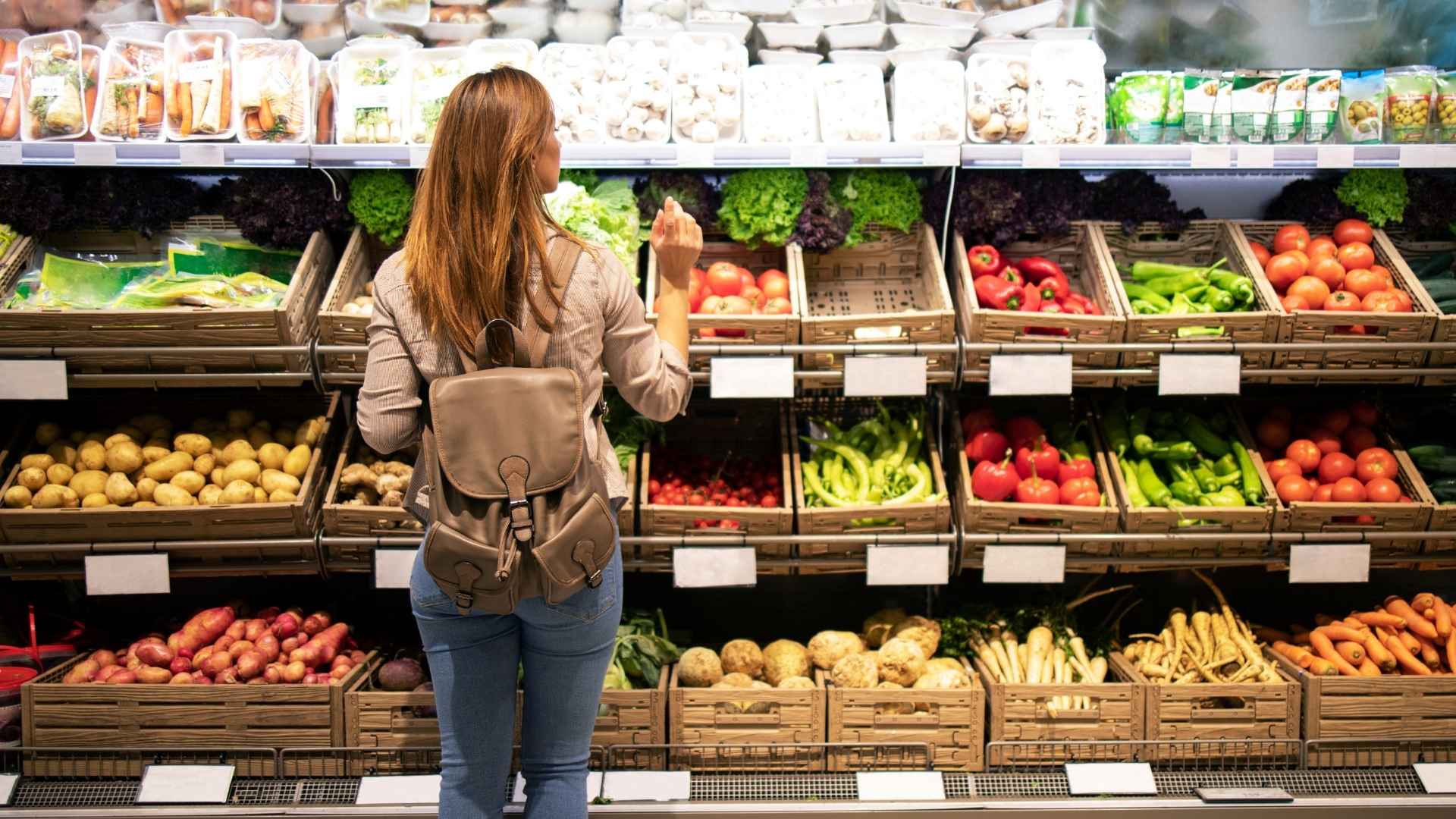By: Rick Stein, Vice President, Fresh Foods, FMI, and Steve Markenson, Vice President, Research & Insights, FMI

Major changes in shopper lifestyles and habits typically impact buying and consumption patterns.
Two of the biggest changes in recent years involve more eating at home and more working from home. Those shifts, which began during the COVID-19 pandemic, are having positive impacts on the consumption of foodservice at retail, according to FMI's latest consumer research The Power of Foodservice at Retail 2023.
Here are some of the report's foodservice research insights and compelling industry opportunities.
Shoppers Hold to New Meal Habits
Shoppers are holding to higher levels of preparing dinners at home and weekly meal planning — trends that became evident last year. Consumers predominantly favor hybrid approaches to dinners that mix scratch preparation with prepared meal items purchased outside the home. The move to hybrid work has altered consumer meal habits across dayparts. Lunch is the daypart showing the biggest advance in retail foodservice purchases.
Retail Foodservice Momentum Advances
Shoppers report a lift in their purchases of foodservice at retail from grocery stores compared to a year ago, and they expect to continue increasing these purchases during the next year. The finding of increased purchases is supported by NIQ data, which shows deli foodservice dollar sales grew to $49.9 billion in the 52 weeks ending Oct. 7, 2023, up 4.2% from the year-ago period. Deli unit sales declined 1.7% in the latest 52 weeks, a finding that matches patterns at many departments across the store.
Industry Opportunities for More Progress
The research points to industry openings to build on foodservice success such as:
- Value Equation: Shoppers view retail foodservice as a good value and retailers can further play up the comparative value against restaurants. Retailers can "do the math" for shoppers on how much farther their dollars go at retail versus at restaurants.
- Restaurant Playbook: Shoppers have become used to certain restaurant amenities they want for their retail deli-prepared foods experiences. Topping the list are having a menu available online, enabling advance ordering through apps, and offering drive-throughs for pickup.
- Meal Planning Support: More than 40% of customers seek additional meal planning help from grocery stores. Opportunities for retailers include meal bundles, in-store displays that bring together the ingredients for a meal, providing ideas through retailer apps, and more heat-and-eat choices.
- Signature Items: Forty percent of shoppers said their supermarkets are known for a particular foodservice item. There is room to enhance that share.

Investing in the Future of Foodservice
There is more to read in the report, including insights on marketing strategies, foodservice cuisine preferences, and health and nutrition opportunities.
Retailers are well positioned to make progress because of their investment plans for this area of the business. About three quarters of retailers plan to increase the space they allocate to foodservice aspects such as fresh-prepared grab-and-go options, based on industry feedback in FMI's The Food Retailing Industry Speaks 2023. Close to 40% are planning to increase labor allocation to foodservice.
These investments will help ensure that retail foodservice programs meet the enhanced meal solutions needs of shoppers and enable retailers to increase sales.


 Industry Topics address your specific area of expertise with resources, reports, events and more.
Industry Topics address your specific area of expertise with resources, reports, events and more.
 Our Research covers consumer behavior and retail operation benchmarks so you can make informed business decisions.
Our Research covers consumer behavior and retail operation benchmarks so you can make informed business decisions.
 Events and Education including online and in-person help you advance your food retail career.
Events and Education including online and in-person help you advance your food retail career.
 Food Safety training, resources and guidance that help you create a company food safety culture.
Food Safety training, resources and guidance that help you create a company food safety culture.
 Government Affairs work — federal and state — on the latest food industry policy, regulatory and legislative issues.
Government Affairs work — federal and state — on the latest food industry policy, regulatory and legislative issues.
 Get Involved. From industry awards to newsletters and committees, these resources help you take advantage of your membership.
Get Involved. From industry awards to newsletters and committees, these resources help you take advantage of your membership.
 Best practices, guidance documents, infographics, signage and more for the food industry on the COVID-19 pandemic.
Best practices, guidance documents, infographics, signage and more for the food industry on the COVID-19 pandemic.
